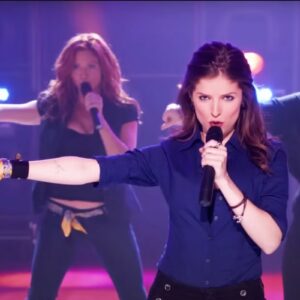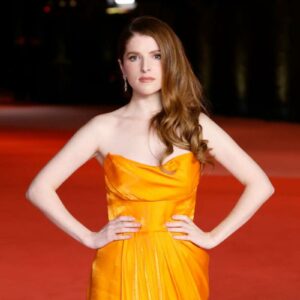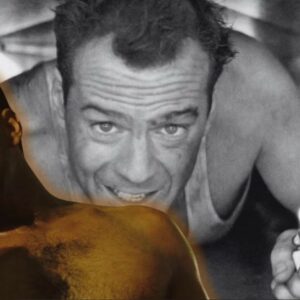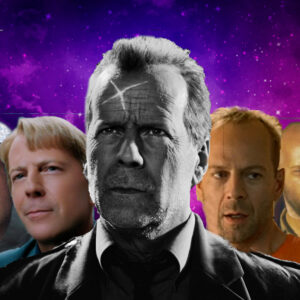Lady Gaga’s impact on film and music is nothing short of revolutionary. As an artist, her ability to transcend traditional boundaries through her transformative on-screen characters is both profound and captivating. Central to this metamorphosis is the meticulous use of costume and makeup, elements that not only enhance but often redefine her personas. This article delves into how Lady Gaga’s collaboration with directors and costume designers brings her characters to life, showcasing her visionary approach and the intricate artistry behind her on-screen transformations.
The Visionary Concept
Lady Gaga, born Stefani Joanne Angelina Germanotta, has always been more than just a pop sensation. Her career is a testament to the fusion of music, fashion, and film, creating characters that resonate deeply with audiences. At the core of this transformation is her collaboration with directors and costume designers. This partnership is crucial in developing a character’s vision, ensuring that every detail, from wardrobe to makeup, contributes to the character’s essence.
Collaborating with Directors and Costume Designers
In the realm of film and music, collaboration is key. For Lady Gaga, this means working closely with visionary directors and skilled costume designers to bring her characters to life. Take, for example, her role in “A Star Is Born,” where Gaga’s input was instrumental in shaping her character, Ally. Her collaboration with costume designer Erin Benach was pivotal in creating a look that felt authentic and grounded. Each outfit, from the humble beginnings to the glamorous stage attire, was meticulously chosen to reflect Ally’s journey from anonymity to stardom.
Similarly, Gaga’s work with directors such as Robert Rodriguez and Jonas Åkerlund in her music videos exemplifies her hands-on approach. In videos like “Paparazzi” and “Bad Romance,” her input is evident in the way her costumes and makeup align with the narrative. These collaborations are not just about aesthetics but also about conveying deeper themes and emotions.
Gaga’s Input in Character Creation
Lady Gaga’s role in character creation extends beyond mere participation; she is often a driving force in defining her characters’ visual identities. Her personal style and creative vision heavily influence the final outcome. In “American Horror Story: Hotel,” Gaga’s character, The Countess, is a prime example. Her collaboration with costume designer Lou Eyrich resulted in an opulent, dramatic look that captured the character’s dark, enigmatic allure. Gaga’s input was not only about the aesthetic but also about how the costumes and makeup would reflect the character’s psychological depth.
This deep involvement in character creation allows Gaga to ensure that every visual element aligns with the narrative she seeks to portray. Her characters are more than costumes; they are extensions of her artistic vision.
Costume Design
The process of creating Lady Gaga’s iconic looks involves meticulous planning and execution. From concept to final design, each costume is crafted to serve both the character and the story. This section explores the intricate process behind her transformative costumes.
The Process of Creating Iconic Looks
Creating a costume for Lady Gaga is akin to crafting a piece of art. The process often begins with Gaga’s input and ideas, which are then transformed into tangible designs by skilled costume designers. For instance, in her “Born This Way” era, Gaga’s costumes were not just about fashion but also about embodying themes of self-empowerment and individuality. Designers like Nicola Formichetti worked closely with Gaga to create looks that were both avant-garde and meaningful. The “Born This Way” album cover, with its futuristic, robotic aesthetic, is a testament to this collaborative process.
The costumes themselves are designed with precision, often involving intricate details that reflect Gaga’s artistic vision. For the “Marry the Night” music video, the costume design team created a series of dramatic outfits that highlighted Gaga’s transformation from a troubled artist to a confident performer. Each piece was carefully chosen to enhance the narrative and evoke the desired emotional response from the audience.
The Role of Makeup in Character Development
Makeup is another crucial element in shaping Lady Gaga’s characters. It goes hand-in-hand with costume design to complete the transformation. For example, in “The Fame Monster” era, Gaga’s makeup, characterized by bold, dramatic looks and striking color palettes, played a significant role in defining her persona. Makeup artists like Sarah Tanno work closely with Gaga to create looks that complement the costumes and enhance the overall character portrayal.
In “American Horror Story: Hotel,” makeup was used to emphasize The Countess’s otherworldly beauty. The use of pale, almost ghostly makeup tones, coupled with sharp, dramatic eye makeup, helped to create a character that was both alluring and unsettling. This attention to detail in makeup design ensured that Gaga’s character was visually striking and thematically coherent.
The Impact on Audience Perception
Lady Gaga’s transformative costumes and makeup do more than just enhance her performances—they fundamentally alter how audiences perceive her characters. This section explores how these visual elements shape audience reactions and contribute to the overall impact of her work.
Shaping Audience Reactions
The visual elements of Gaga’s characters play a crucial role in shaping audience reactions. In “Poker Face,” for instance, her costume and makeup choices, including the now-iconic poker face mask, were integral to the song’s narrative and theme. The striking visuals not only captured the audience’s attention but also reinforced the song’s message of emotional detachment and confidence.
Similarly, in “Bad Romance,” the extravagant costumes and dramatic makeup contribute to the video’s surreal, almost dystopian atmosphere. Gaga’s transformation into various personas within the video, facilitated by costume and makeup, creates a visually compelling story that resonates with viewers on an emotional level.
Reinforcing Thematic Elements
Thematic elements in Gaga’s work are often reinforced through her use of costume and makeup. In “Alejandro,” for example, the military-inspired costumes and bold makeup choices underscore the song’s themes of rebellion and liberation. The visual aesthetic aligns with the song’s message, creating a cohesive and impactful experience for the audience.
This synergy between thematic elements and visual design is a hallmark of Gaga’s work. By carefully crafting her costumes and makeup, Gaga ensures that every aspect of her performance contributes to the overarching narrative, enhancing both the emotional and aesthetic impact of her characters.
Conclusion
Lady Gaga’s transformative on-screen characters are a testament to her artistic vision and collaborative spirit. Through meticulous costume and makeup design, she brings her characters to life in ways that are both visually striking and deeply resonant. Her ability to collaborate with directors and costume designers, coupled with her own creative input, ensures that each character is not only well-designed but also serves a greater narrative purpose.
The process of creating Gaga’s iconic looks involves a blend of artistry and precision, with every detail carefully considered to enhance the character’s portrayal. From the visionary concepts to the final design, Gaga’s approach to costume and makeup exemplifies the power of visual transformation in film and music.
In the end, Lady Gaga’s impact on the entertainment industry is not just about her music but also about her ability to redefine characters through the art of transformation. Her costumes and makeup are more than just accessories—they are integral to her artistic expression and storytelling. As Gaga continues to push the boundaries of art and entertainment, her transformative characters remain a testament to the enduring power of costume and makeup in shaping cinematic and musical narratives.





